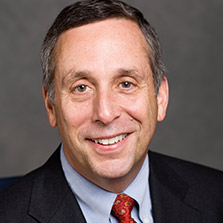Today, urban colleges and universities are a significant part of the big come-back of the American city. But in the 1980s, urban universities — and the cities that housed them — were experiencing an identity crisis. Before metro areas started to grow again, college and universities located within them were hesitant to emphasize their urban setting.
The Coalition of Urban and Metropolitan Universities (CUMU) helped these schools reclaim their pride and identity. CUMU is the longest-running and largest organization dedicated to urban and metropolitan universities and their partners.
“We try to help our institutions understand their urban advantage, help them live up to their public responsibility, and offer them a network of peers and resources to execute their mission effectively,” said Bobbie Laur, CUMU’s Executive Director.
In 1989, CUMU was founded by a group of presidents and chancellors, in part, to tell their story. These leaders wanted to emphasize their school’s ties to their broader communities as well as the mutually beneficially relationship one has with the other.
They also recognized that developing a peer group that cared about the challenges urban communities were facing could be a consolidated partner in academic research and could answer some of the questions the cities were facing. Individually, the schools could develop a shared responsibility between the college and the surrounding city. Collectively, they would have a group of equally invested peer institutions to share best practices and provide support.
Robert Caret, who is now the Chancellor of the University System of Maryland, was instrumental in the creation of CUMU, and was in the room at Wright State University nearly 30 years ago when the organization was founded.
“The vision was to better articulate the role this family of institutions plays in their communities,” said Caret, who at the time was the Provost and Vice President of Academic Affairs at Towson University. “The specific challenges and opportunities may change, but the goal is the same, making our communities better, in all ways. The coalition has fulfilled that role admirably and, in this time of even more complex challenges, I am sure they will continue to serve that role going forward.”
Laur, who is based at Towson University near Baltimore, is now in her twelfth year as the organization’s executive director. She is excited about the future of CUMU and of the urban schools it brings together.
“What unites our diverse institutions is having a priority around place,” Laur said. “Our members have a commitment to thinking about their mission as it relates to the place that they reside.”
CUMU reinforces the role that universities play as anchor institutions in the cities they reside in, providing stability as educators, employers, and developers. According to a 2014 report by the Center for American Progress, universities represent three percent of the national economic output and employ more than 3 million people.
Coupled with the fact that more than two-thirds of the country’s jobs are based in major metropolitan areas, CUMU is situated at a crucial intersection for higher education. As their website states: “Our future will be shaped by the success of metropolitan hubs as sources of innovation, creativity, health care, transportation, employment, governance and education.”
CUMU helps its institutions live up to that public responsibility to their communities as well as providing them with a network of peers and resources of best practices to execute the mission more effectively. The organization now has close to 100 member schools in more than 50 metropolitan areas. The schools are research-focused universities, small private liberal arts colleges, entire state school systems, and HBCUs. CUMU’s definition of “urban” is relatively loose: there are schools in dense urban centers, like Drexel University in Philadelphia or American University in Washington, DC, as well as schools in smaller metro areas like Florida Atlantic University in Boca Raton, Florida and the University of North Carolina at Greensboro.
Regardless of the city’s size, though, CUMU helps create a win-win-win situation for the university, city, and students, a reciprocity that Laur is quick to point out.
“It can’t just be about institutions trying to save their cities,” Laur said. “It has to be about understanding that there’s a reciprocation of knowledge and that universities aren’t the holders of all the knowledge.”
One of CUMU’s major contributions in higher education has been its development of the community engagement and service learning models, which integrate meaningful community service with more formal instruction and reflection. It is now commonly used to teach civic responsibility and strengthen community relationships.
“Our students have an advantage because they can work in diverse places and diverse communities,” Laur said. “They really get an understanding of what’s happening across this country in a vast sense. Because we are located in cities, we have the opportunity to become more global experts.”
For Nyeema Watson, the Associate Chancellor for Civic Engagement at Rutgers University-Camden, CUMU was critical for getting her department off the ground in 2010.
“The university has always had a commitment to service and outreach,” she said, “but [CUMU] really crystalized that we wanted to make sure we weren’t just in the city but of the city.”
Rutgers’ Office of Civic Engagement exemplifies CUMU’s member pledge “to enrich their metropolitan communities while strengthening the university’s core commitment to teaching and research.” It’s the hub for students, faculty, and staff who want to connect with the community partners in the city of Camden, which is right across the Delaware River from Philadelphia. Conversely, it’s also the first point of contact for public and private organizations who want to start a partnership with the school.
Laur is also excited about the work Devorah Lieberman, President of the University of LaVerne, is doing on the issue of healthcare in her southern California city.
The school is working collectively with hospitals in the city to think about healthcare pipelines. Based on health care workforce shortages identified by the school’s hospitals and community health care organizations, Lieberman is focusing on pathways for LaVerne community members to work with the school.
As the organization gears up for its annual conference in October — this year themed on “The Urban Advantage” — Laur is also preparing to announce new initiatives for the organization to focus on over the next five years.
“CUMU is a place — whether it’s virtually, in person, or on the phone — that feels communal,” Laur said. “It doesn’t feel like they’re limiting. It’s a group of people who share an intellectual interest in the same issues, but with a real focus on practicality.”


